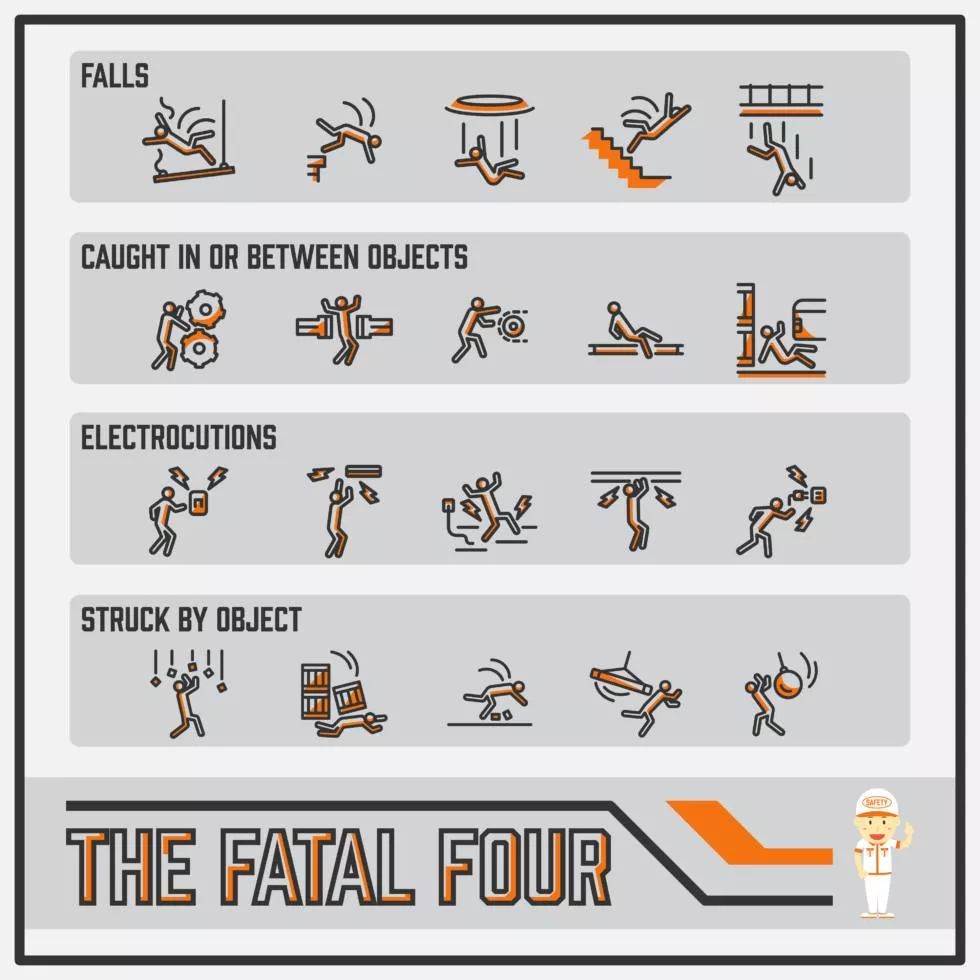Four Leading Causes of Fatalities in the Construction Industry
It’s no surprise that construction can be a dangerous industry. Whether the job site is a small remodeling project or a major infrastructure operation, every location has its hazards, leading to many injuries at work. To complicate matters, construction is, by nature, a complex, ever-shifting industry. The job site may change month-to-month or even day-to-day. Multiple people are on-site at the same time. And several employers (with differing training standards and communications practices) share one location as contractors and subcontractors work together to complete a job.
Construction also makes up a disproportionate number of workplace fatalities. Even without accounting for underreporting, one in five worker deaths are in construction, according to OSHA. More than 1,000 construction workers died in 2019 alone.
The Focus Four Hazards and top construction risks
Construction risks are wide-ranging. Heat illness, for example, can cause serious problems for construction crews spending long hours outside in heavyweight, protective clothing. Mental health struggles and suicide are an often-unacknowledged risk. According to the CDC, male construction workers have a suicide rate that’s 65 percent higher than all U.S. male workers.
But construction-related deaths tend to fall into four leading categories. Sometimes called the “Fatal Four,” but more positively known as the “Focus Four” hazards, these are the primary areas to limit deaths and improve safety.
Falls
Falls are, by far, the leading cause of death for construction workers. According to the CDC, one third of construction-related deaths are caused by falls. Workers are most likely to fall from roofs, ladders or scaffolding. When workers do survive falls, they’re also often seriously hurt, suffering traumatic brain injuries or other lifelong issues.
Many falls, however, are entirely preventable. The National Stand-Down to Prevent Falls in Construction annual education week focuses on training contractors to plan ahead, provide the right equipment and train workers. Prevention through design principles can also be used to eliminate hazards and control the risks to workers.
Struck-by incidents
The second-most common cause of death in construction is struck-by incidents. These accidents occur when a worker is hit by a falling object or struck by a machine or vehicle. One of the most serious (and high-profile) risks comes from cranes. Crane overturn, crane collapse and crane struck-by incidents are potential issues at larger job sites.
Site safety procedures can help eliminate some dangers, however, including crane risks. Workers should:
- Never work under a load
- Avoid a crane’s swing radius
- Maintain work zones separated from vehicles and equipment
- Attach tools to a work belt when working from heights
- Wear high visibility clothing
Electrocution
Direct or indirect contact with live wiring (light fixtures, circuit breakers, control panels or transformers) is the most common cause of electrocution-related deaths in the construction industry. And while electricians and power line installers are most affected, roofers, HVAC professionals, mechanics and laborers are as well, mostly due to contact with overhead or underground lines.
Caught in/in between accidents
Construction workers are also at risk for caught in/in between accidents, including rollovers or trench collapses. According to the CDC, trenching deaths account for 54 fatalities a year.
Georgia Workers’ Compensation Attorneys
If you have suffered from a construction job site injury, you need an Atlanta workers’ compensation attorney. We understand how complex these injuries can be. Contact the Law Offices of Laura Lanzisera today for a free consultation, or give us a call at 404-991-5097.

Leave a Reply
Want to join the discussion?Feel free to contribute!